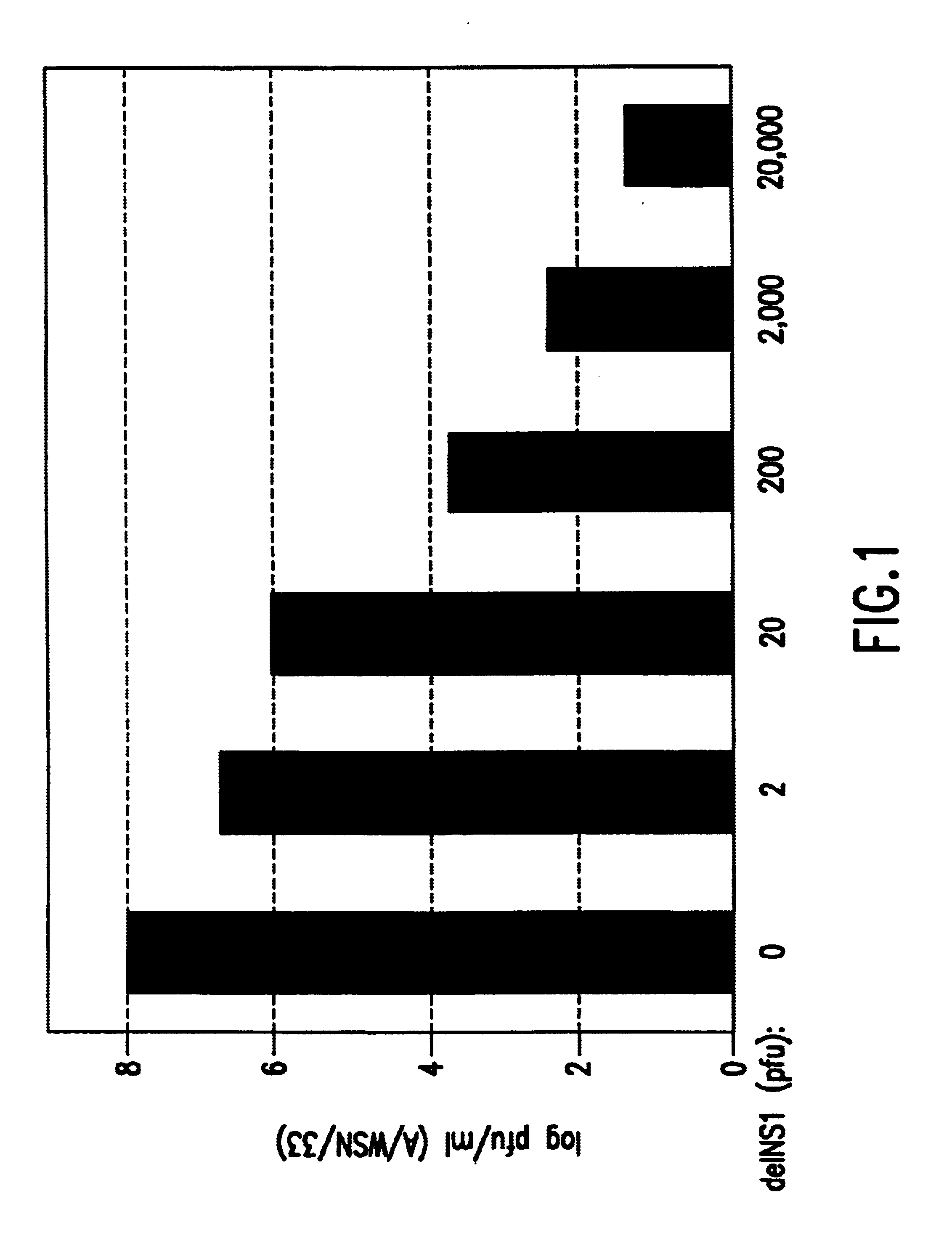Attenuated negative strand viruses with altered interferon antagonist activity for use as vaccines and pharmaceuticals
a technology of interferon antagonist activity and negative strand virus, which is applied in the field of attenuated negative strand virus, can solve the problems of limited protection, inability to replicate, and limited utility of inactivated vaccines, and achieve the effect of reducing viral titer and reducing the number of foci formed
- Summary
- Abstract
- Description
- Claims
- Application Information
AI Technical Summary
Benefits of technology
Problems solved by technology
Method used
Image
Examples
Embodiment Construction
The invention relates to the generation, selection and identification of attenuated negative strand RNA viruses that have an impaired ability to antagonize the cellular IFN response, and the use of such viruses in vaccine and pharmaceutical formulations.
The viruses can have segmented or non-segmented genomes and can be selected from naturally occurring strains, variants or mutants; mutagenized viruses (e.g., by exposure to UV irradiation, mutagens, and / or passaging); reassortants (for viruses with segmented genomes); and / or genetically engineered viruses. For example, the mutant viruses can be generated by natural variation, exposure to UV irradiation, exposure to chemical mutagens, by passaging in non-permissive hosts, by reassortment (i.e., by coinfection of an attenuated segmented virus with another strain having the desired antigens), and / or by genetic engineering (e.g., using "reverse genetics"). The viruses selected for use in the invention have defective IFN antagonist activi...
PUM
| Property | Measurement | Unit |
|---|---|---|
| temperature sensitive | aaaaa | aaaaa |
| negative polarity | aaaaa | aaaaa |
| polarity | aaaaa | aaaaa |
Abstract
Description
Claims
Application Information
 Login to View More
Login to View More - R&D
- Intellectual Property
- Life Sciences
- Materials
- Tech Scout
- Unparalleled Data Quality
- Higher Quality Content
- 60% Fewer Hallucinations
Browse by: Latest US Patents, China's latest patents, Technical Efficacy Thesaurus, Application Domain, Technology Topic, Popular Technical Reports.
© 2025 PatSnap. All rights reserved.Legal|Privacy policy|Modern Slavery Act Transparency Statement|Sitemap|About US| Contact US: help@patsnap.com



